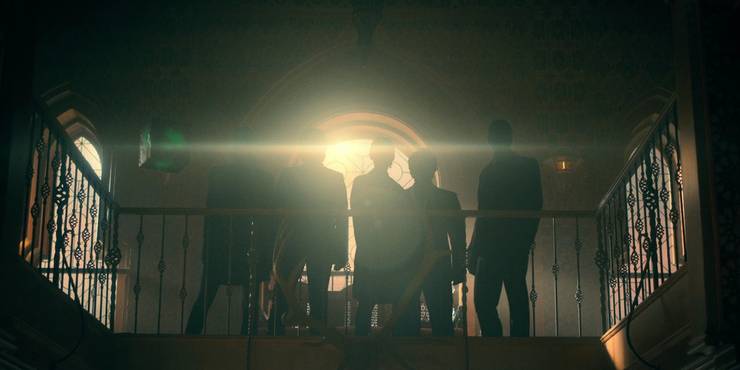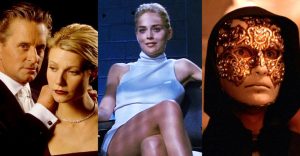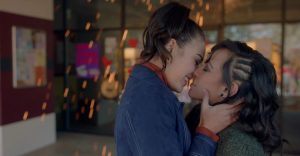Why The Umbrella Academy Season 2 Is Better Than The First Season

The Umbrella Academy season 1 set a high standard for the unconventional superhero show, but season 2 managed to be even better. Based on the comics by Gerard Way and Gabriel Bá, The Umbrella Academy follows a family of adopted siblings who were all born under bizarre circumstances on October 1, 1989, when 43 women around the world suddenly gave birth despite not having been pregnant when the day began. Collected up by mysterious scientist Reginald Hargreeves, the children each developed unique superpowers and were trained to work together as a crime-fighting team.
Instead of being a typical comic book story about superheroes fighting bad guys, The Umbrella Academy explores how each member of the Hargreeves family was damaged by their father’s ruthless efforts to shape them into the heroes he wanted them to be. Season 1 began with the death of Reginald Hargreeves and the return of long-missing sibling Five, and used the mystery of Reginald’s death to delve into how each of the kids were affected by their upbringing. Also, the world ended.
The Umbrella Academy season 2 finds the Hargreeves family thrown back in time to the 1960s, thanks to some rather messy time travel on Five’s part. Featuring another excellent soundtrack and continuing to embrace weirdness, the second chapter takes the best elements of season 1 and builds upon them. Here’s how The Umbrella Academy season 2 managed to avoid the sophomore slump.
Splitting The Characters Up Made Them Stronger

In The Umbrella Academy season 1, the Hargreeves siblings are reunited after a period of estrangement in the very first episode. This worked as an introduction to the characters, since it immediately laid out their relationships with one another and with their father. In season 2, however, they don’t actually get together as a group until episode 5. The 1960s setting offers a unique chance for each of the characters to discover who they are outside of their identity as a family and their former reputations, as each one of them is given a chance at a new life – which some of them embrace better than others.
Klaus becomes a messiah and then later runs away from his responsibilities to his cult, while Ben helplessly watches him self-destruct all over again. Allison chooses not to use her powers, even though they would make her life a great deal easier, and instead fights for civil rights the hard way. Luther pines over Allison and seeks out a new father figure, Jack Ruby, to tell him what to do now that Reginald is gone. Diego indulges in his superhero fantasy and soon ends up incarcerated. And Vanya, finally freed from her miserable upbringing and the weight of her guilt thanks to a case of amnesia, is able to happy – at least for a while. If The Umbrella Academy season 1 established the Hargreeves’ dysfunction as a family, season 2 takes the time to explore their individual personalities – warts and all – and deepens our understanding of them in the process.
The Umbrella Academy Season 2’s Story Is More Cohesive

Despite the characters being split up for much of it, The Umbrella Academy season 2 manages to tie its subplots together without getting too lost in narrative offshoots. One of season 1’s flaws was that it felt somewhat over-stuffed and heavy with the requirements of world-building and origin stories. It had to introduce and attempt to explain the Temps Commission (not an easy task), while also establishing the Umbrella Academy’s past through flashbacks, developing Harold Jenkins as a villain, unravelling the mystery of Reginald Hargreeves’ death and gradually paving the way to the end of the world. With so many distractions, it was easy to lose track of the plot and forget why, for example, Klaus was smashing a snow globe into his head in the offices of a prosthetics company.
In some ways, The Umbrella Academy season 2 is structured similarly. The Swedes replace Hazel and Cha-Cha as the Temp Commission’s agents within the story, and the Handler returns as the main antagonist. But this time around the focus is kept more or less squarely on the Hargreeves siblings and the question of how their presence has changed the course of the JFK assassination. Even subplots like Allison’s activism and Reginald’s involvement with Majestic 12 are connected to that central event. The Umbrella Academy season 2 is unburdened from having to pack in exposition about the world and the characters in it, and it makes the most of that freedom by delivering a tighter story that flows better.
The Umbrella Academy Season 2’s Ending Is More Intriguing

The Umbrella Academy season 1’s ending was certainly epic in scale, with the former members of the Umbrella Academy forced to flee back in time as a chunk of moon rock crashed into the Earth. It had its great moments, like Klaus discovering the true potential of his powers, and was bold in that the finale saw the “heroes” of the show completely failing to save the world. Still, it did little to actually set up a new storyline and mysteries for season 2. Fans only knew that the Hargreeves family (and Hazel, and Agnes) had escaped the apocalypse, but there was no indication of where they’d gone or what was next for them.
Though season 2 sets up a similar arc of stopping the end of the world, the actual grand spectacle of nuclear destruction happens at the very start of the season, and the apocalypse storyline is resolved before the season finale. This is emblematic of how The Umbrella Academy doesn’t just retread old ground in season 2, but moves things forward. This time around, Vanya’s family are able to bring her back from the edge, and they actually support her when she heads to the farm to help Harlan. Though 1960s Reginald Hargreeves wasn’t impressed by them, “Team Zero” prove to be a more united force than the Umbrella Academy ever were. The scene in which they all pile into the car with Vanya shows just how far they’ve come as a family since we first met them.
Then there’s the hook for The Umbrella Academy season 3. Once again the characters are thrown into an uncertain world, but this time around we actually get to see where they ended up: in an alternate future where their actions in the 1960s have prevented the Umbrella Academy from ever being formed. There are countless questions raised by this ending. Who are the Sparrow Academy? Do the members of the Umbrella Academy have doppelgangers out in the world? What else was changed – for example, by Harlan retaining some of Vanya’s powers, or by Vanya’s massacre at the FBI building in Dallas? It’s an ending that satisfactorily wraps up a story while also teasing the next story just the right amount, making it a perfect season finale.
About The Author


















